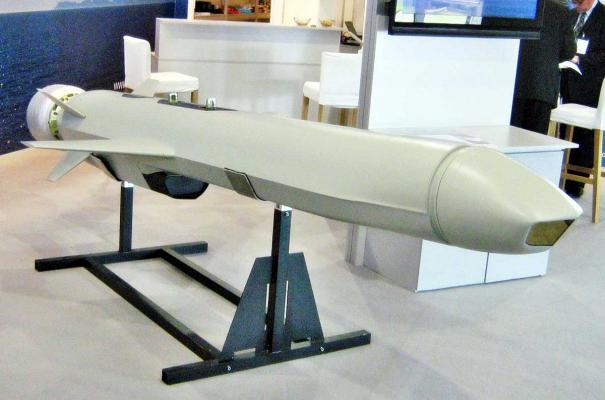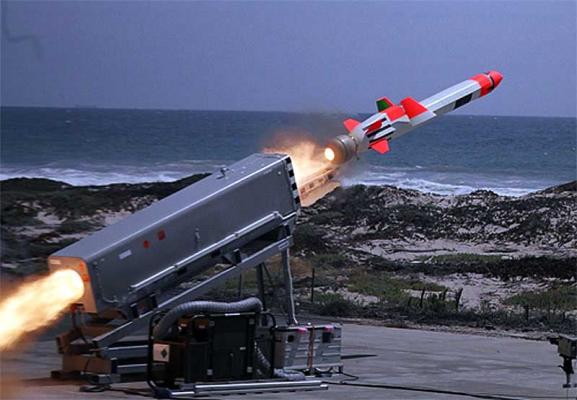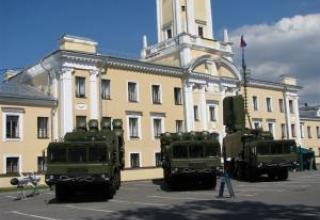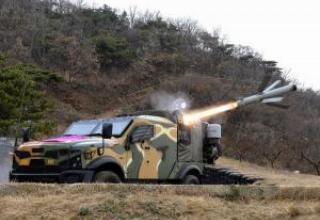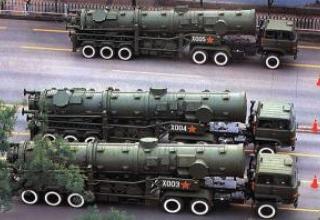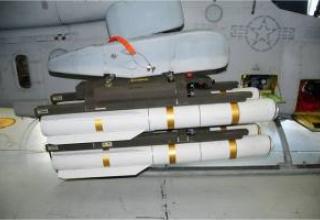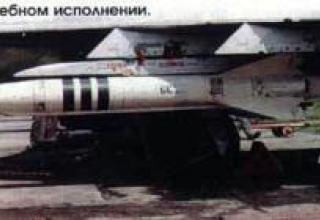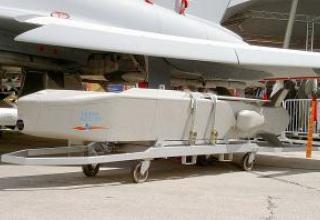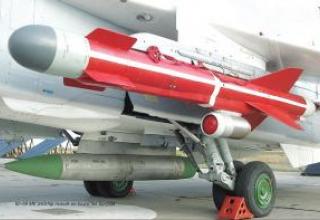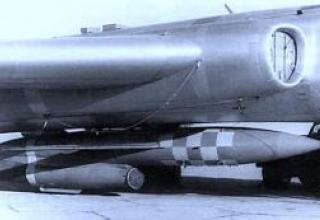The medium-range anti-ship missile NSM (Naval Strike Missile) is designed to engage a wide range of surface targets in the open sea, in straits, fjords and skerries. It can be used against ground targets.
The missile was developed by Kongsberg Defence & Aerospace for the Norwegian Navy as a replacement for the Penguin missile. The NSM can be used in multi-purpose shipborne, ground-based and airborne systems. The ship-based NSM missiles are planned to be armed with the latest frigates such as the Nansen and missile boats such as the Skjold. The contract for serial production organization was concluded in June 2007. The F-310 Nansen head frigate was accepted for service by the Norwegian Navy in June 2006. The aircraft version of the NSM is part of the advanced armament of F-35 Lightning II, Eurofighter Typhoon, Gripen and NH90 multipurpose fighters. In 2008 Poland concluded a contract for the supply of ground-based NSM missiles, which it plans to use for the protection of the Baltic Sea coast. Under this agreement, in 2012 the Polish Navy will receive a coastal defence missile division consisting of two batteries equipped with mobile NSM missile launchers. The location of the division has been chosen as the location of the Semirovica Research and Development Division. The cost of the contract amounted to 115 million dollars.
The aircraft version of the missile, designated JSM (Joint Strike Missile), is planned to be used as an onboard weapon of F-35 Lightning II multi-purpose fighters. The multi-purpose JSM has an extended range up to 240 km, an advanced control system with a bidirectional data line, which allows to exchange information and act as part of a group of airborne attack vehicles. The F-35 fighter can carry two JSM missiles in internal compartments and additional missiles on external suspension units (see photo). An agreement on joint efforts to integrate JSM into F-35 weapons was signed by Lockheed Martin and Kongsberg Defence & Aerospace in April 2009. The project is funded by the Governments of Norway and Australia. The first phase of the work will be completed at the end of 2010 and mass production is planned for 2013.
Composition:
The NSM rocket is designed according to the normal aerodynamic scheme, has a mid-range opening wing and four all-terrain rudders in the tail part of the hull (see photos 1, 2, 3, 4, 5, 6). Measures to reduce radar and thermal signature have been implemented in the missile design. The hull surface has no contrasting slits or sharp edges and composite and radio absorbent materials are widely used.
RDTT is used as the starting accelerator. The NSM missile's marching engine is a TRI 40 turbojet engine developed by the French company Microturbo. The small-size Microturbo TRI 40 single-shaft engine is equipped with a four-stage axial compressor with a pressure ratio of 3.83:1 to 5.58:1 and a circular combustion chamber. The TRI 40 develops a static take-off thrust of 2.5-3.0 kN at its own weight of 44 kg, has a maximum lateral dimension of 280 mm and length of 680 mm. The engine operates in a fairly wide flight range with the ability to maneuver in height and speed (flight height from 0 to 6000m, flight speed up to 0.95M). The engine can be started by a pyrostarter or autorotation at altitudes from 0 to 5300m with a flight speed of 0.5-0.9M. To perform the flight program and regulation, TRI 40 is equipped with a modern digital electronic-hydromechanical control system and a built-in electric generator installed on the turbine shaft. In addition to aviation kerosene JP8, the engine can run on synthetic high-calorie fuel JP10. The temperature in the combustion chamber is about 1010°C, specific fuel consumption is less than 120 kg/kN/h. The peculiarity of the TRI 40 design is the absence of a separate oil system, the bearings are lubricated with fuel.
The combat unit weighing 120 kg is a penetrating, flame-throwing one. It is equipped with a fuse with a time delay, which provides multi-variant detonation depending on the type of target.
Control system - combined. Control at the marching section of the trajectory is carried out by an inertial control system. The control system allows to operate outside of the target line of sight, the missile can move on a complex pre-programmed trajectory, round obstacles on the ground and air defense areas of the enemy, to attack the target in the most vulnerable sectors. The missile's trajectory correction in the march area is based on data from the GPS satellite navigation subsystem and the TERCOM (Terrain Contour Matching) terrain correction subsystem. The principle of TERCOM operation is based on comparing the terrain of a particular area where the missile is located with reference maps of the terrain along the route of its flight, previously stored in the memory of the onboard control system.
The missile provides for the installation of a new noise-immune thermal imaging head of homing with increased sensitivity and an enhanced sector of view. According to experts, this SOS will allow to detect a target even if its thermal field is reduced with the help of a universal water protection system. The autonomous target selection is performed by comparing the target image from the CNS sensor with standard target image templates stored in the onboard control system memory.
The missile is delivered in a 4 x 0.81 x 0.8m container. The curb weight of the container is 710 kg. The time between scheduled inspections is 3 years and between overhauls is 5-10 years. Planned time of missile operation - 30 years.
Characteristics:
| Range of fire, km: - maximum - minimum |
185 3 |
| Flight speed, M. | 0.95 |
| Dimensions, mm: - length - wingspan |
3960 1400 |
| Start weight, kg: - accelerator - unaccelerated |
407 347 |
| Weight of combat unit, kg | 120 |
Testing:
As of 01.01.1950, the factory batch of 230 shells was completed and sent to the Pavlograd test site.
In November 1949, pre-factory tests of 34 shells were carried out together with the fuse B-377 during which cases of missiles were revealed.
Special tests carried out to determine the causes of deficits showed that the most probable cause was an increased release of unburned reactive charge particles at the end of the active section of the trajectory.
In order to eliminate this phenomenon, in December 1949 a bench-top refinement of the engine was started with regard to aperture enhancement and ensuring that the powder charge was fixed in the chamber. After the end of the bench work and experimental firing for checking the reinforced aperture, the factory batch of projectiles was to be equipped with modified apertures on site and presented for factory tests in February 1950.
Sources:
- Naval Strike Missile - NSM - Kongsberg Gruppen
- SAFRAN Microturbo
- Naval Strike Missile /ru.wikipedia.org/
